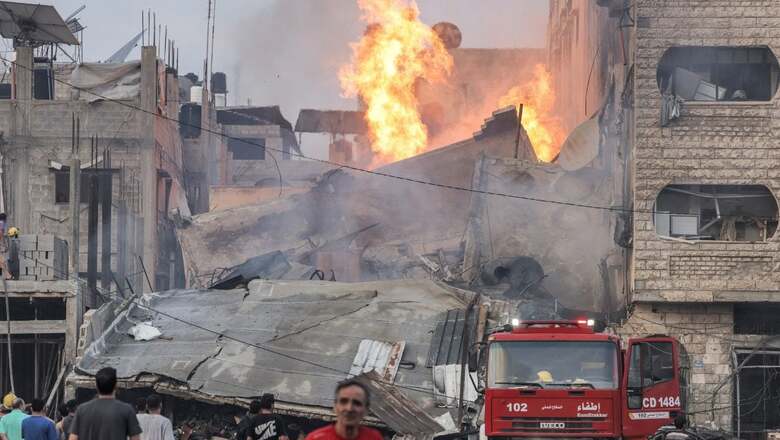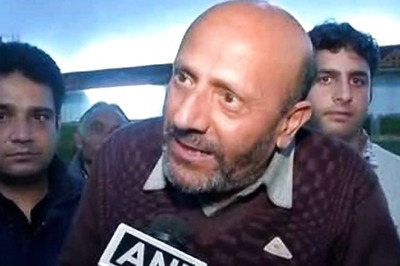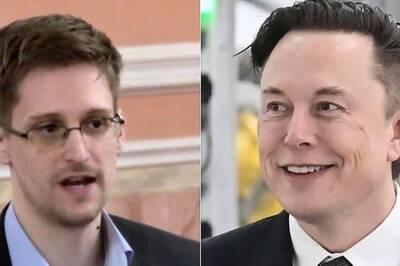
views
The nearly naked and clearly broken body of a woman lying in the back of a vehicle surrounded by jeering fatigues-clad men was meant to convey something very simple and specific on Saturday morning: terror. Armed terrorist cadres of Hamas swarmed out of the Gaza Strip to take the mighty state of Israel totally by surprise and wreak havoc on the “oppressors” of Palestinians. Images of Israeli soldiers—dead or alive—were meant to drive home the “victory”.
But the woman being passed off as a dead Israeli soldier was actually an Israeli-German pacifist and musician who had been dancing at a rave in the Negev desert near Gaza when she fell prey to waves of Hamas terrorists in that surprise early morning attack. Her real identity emerged when her horrified family saw the same photo on social media and recognised her from the distinctive tattoos on her legs and long dreadlocks. The photo then had the opposite effect.
It exposed what Hamas had actually done. The gunmen had not attacked Israeli troops or indeed any other arm of the Israeli state but instead exterminated with extreme prejudice a large gathering of unarmed partygoers, like shooting goldfish in a bowl, as the saying goes. They had taken many others hostage too from the same party, including a girl who was seen on a video screaming for help as she and her boyfriend were frogmarched away by terrorists.
These images defined Day 1 of the Hamas attack. Day 2 and 3 focused on the Israeli retaliation. And in their wake came the predictable flood of photos of devastation, death and despair in the bombed Gaza areas. Those photos were similar to what the world has seen many times before, from many other conflict zones and yet never seemed to get enough of. And these were used to great effect promptly at protest rallies and meetings round the world.
There were photos of charred bodies being pulled out of the debris of bombed buildings, particularly those of women and children, wailing mothers, dazed residents looking at the devastation, defiant ‘fighters’ and, of course, the ever-present aid workers talking about the brutal consequences of the Israeli actions. Amid this blatant play for sympathy in a situation caused by Hamas, there was a curious absence of photos of the massacre at that desert rave.
The only visuals doing the rounds are Before and After ones—before the massacre and after the clean-up. There are videos of what seem to be armed paragliders descending on the partygoers and scenes of them running helter-skelter into the fields ahead of some unseen enemy. Then there are images of damaged and destroyed cars. But empty cars. Doors open, windows shattered, some pockmarked with bullet holes indicating what had happened.
The bodies of those innocent civilians—of many nationalities—who were most certainly gunned down by Hamas terrorists as they tried to flee, had been removed by the time the images were recorded. Only the haphazard placement of the cars, some even off the road, gave an inkling of the bloody mayhem that had been wrought. So the terror-invoking potential of that sight had dissipated. Was this done to spare their families the additional pain of graphic images?
In one case, a TV journalist showed a glimpse of a corridor leading to the room of an air-raid shelter where many young people had hidden to escape those terrorists. But they were found—and shot dead inside. The walls of the corridor of that doorless concrete bunker were riddled with bullet holes and there was blood spatter. As for the scene inside the actual room even after the bodies had been removed, the facial expression of the reporter said it all.
Maybe in the coming days, there will be some sanitised visuals of what happened in the homes of the hundreds of Israeli settlers who were killed or kidnapped by the Hamas terrorists. Entire families—including the very young and very old—were wiped out, as the rising death toll confirms. There are so far only photos of those families in happy times, even as their relatives are completing the grim task of giving DNA samples to help identify their missing loved ones.
The world may never see the exact extent of the barbarity of the Hamas terrorists and so the question arises about whether it ought to. Should visual evidence be that one-sided when the battle is as much about mind space as about rights and wrongs? By ‘sparing’ people the horror of seeing what Hamas did to defenceless civilians, is the validity of the Israeli reaction being undermined? Or is Israel robbing Hamas of its “glory” by depriving it of its images of terror?
That massacre in the desert deprived Hamas of any fig leaf of “retaliation for oppression”. Murdering hundreds of civilians as retribution for what Hamas considers the repressive actions of the Israeli state cannot be justified in any way. Hamas succeeded in its objective of shattering the iron dome of Israeli invincibility with this totally unexpected attack. Images of murdered or terrified Israelis could certainly further damage that image of omnipotence.
But not putting out visuals to shock a distant and mostly uninformed world into the reality of the situation has its downside. It would not be surprising if, at some later date, there are denials by apologists that any massacre of unarmed civilians in the desert by Hamas took place at all. And the absence of graphic visuals could well be cited as evidence that it was all a cynical Israeli concoction to justify its bombardment of Gaza. And many will believe this version too.
Regrettably, impressionable individuals in other countries often try to influence the actions of their governments on international issues on the basis of incomplete information. The anti-Israel petitions put out this week by student organisations of Harvard University demonstrate this truism. Had those young people also seen visuals of what Hamas terrorists had done to 260 partygoers of almost the same age, perhaps a few of them may have reconsidered their views.
For generations of Indians, gory images of Rajiv Gandhi’s shattered body at Sriperumbudur ensured there was no sympathy at all for the Sri Lankan Tamil terrorists who killed him. Perhaps the lack of similar visuals of Indira Gandhi helped India heal after the anti-Sikh pogrom that followed her assassination. Visuals are a double-edged sword, and that is why there is a perennial debate about whether the media should put out grisly images of violence.
The videos and photos of that unfortunate girl with the tattoos did a lot to put Hamas’ actions in perspective: that they were out to murder just about anyone—peaceniks, babies, grannies—as representatives of the Israeli state whose destruction remains their sole goal. As more photos emerge of Gaza’s civilians bearing the brunt of Israeli retaliation for Hamas’s massacre, it would be germane to remember that retributive violence is never fair—to anyone.
The author is a freelance writer. Views expressed in the above piece are personal and solely that of the author. They do not necessarily reflect News18’s views.



















Comments
0 comment